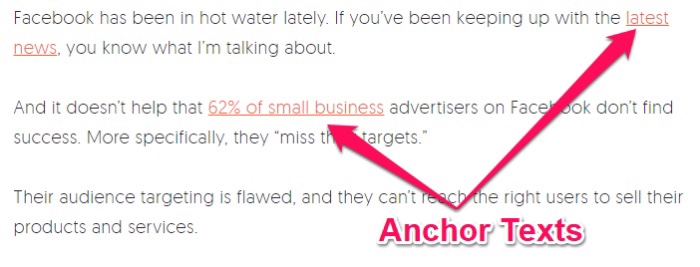In the intricate realm of search engine optimization (SEO), every element of your content plays a crucial role in determining your online visibility and ranking. One often overlooked but incredibly impactful aspect is SEO anchor text—the text that serves as the clickable link leading to another page. While it may seem like a minor detail, the text you use for your links can significantly influence your website’s performance. In this article, we’ll delve into the world of SEO anchor text, exploring why it matters, how to do it right, and providing examples of both effective and ineffective practices.

The Significance of Anchor Text:
SEO anchor text acts as a bridge between different pages of your website or even between external sites and your own. It provides context to search engines about the content of the linked page and its relevance to the user’s query. Google and other search engines analyze anchor text to understand the topic, content, and credibility of the linked page, which in turn affects how your website is ranked in search results.
Why Anchor Text Matters:
- Relevance and Context: Well-crafted anchor text provides valuable context about the content on the linked page, making it easier for search engines to understand its subject matter.
- User Experience: Clear and descriptive anchor text improves user experience, as readers know exactly where they’ll be directed when they click on a link.
- Credibility: Proper anchor text usage signals to search engines that your website is authoritative and provides relevant content, potentially boosting your SEO rankings.
Crafting Effective Anchor Text:
- Be Descriptive: Choose anchor text that accurately reflects the content of the linked page. Use keywords related to the topic to enhance relevance.
- Avoid Generic Phrases: Instead of using vague terms like “click here” or “read more,” use descriptive phrases that hint at the content.
- Natural Language: Craft anchor text that flows naturally within the context of the content. Avoid forced or overly promotional text.
- Variety: Utilize a mix of anchor text types—exact match, partial match, branded, and generic. This diversity looks more organic to search engines.
- Avoid Keyword Stuffing: While keywords are crucial, avoid stuffing them into anchor text. Maintain a balance for readability and user experience.
Good vs. Bad Examples:
Good Example:
- “Learn more about effective anchor text strategies.”
- “Discover the power of SEO anchor text in ranking.”
Bad Example:
- “Click here to find out.”
- “Visit this link to see.”
Maximizing the Potential of Anchor Text
In the intricate dance of SEO, anchor text emerges as a powerful player, capable of shaping your website’s destiny in the digital world. Choosing the right words for your links can greatly impact your search engine rankings, user experience, and online credibility. By crafting descriptive, context-rich anchor text and avoiding generic terms, you’re effectively signaling to search engines that your content is valuable, relevant, and deserving of a higher rank. As you navigate the world of anchor text, remember that this seemingly minor detail holds the potential to make a significant difference in your website’s online visibility and success.
As an Amazon Associate we earn from qualifying purchases through some links in our articles.




